My Green Kitchen: The Ultimate Guide to an Eco-Friendly Kitchen
- February 25 2019
- 3 min read
My Green Kitchen: The Ultimate Guide to an Eco-Friendly Kitchen
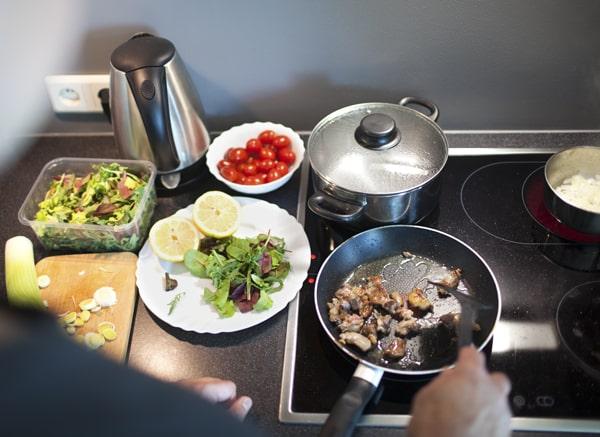
Why Go Green in the Kitchen?
The kitchen is one of the most important rooms in any home. It's often the beating heart of a household, where people eat, socialize, relax, and congregate. With such a vital role, it should come as no surprise that your choices, knowingly or not, can have an environmental impact.
More and more people are making efforts to ‘go green' at home. By this, we mean making conscious efforts to make their home more eco-friendly. There are many reasons to so; it's good for the environment, it can save you money, and it can have positive impacts on your health. From recycling to switching to energy-efficient appliances, you can make your kitchen a sustainable place by implementing a few simple changes.

If you're looking to reduce your carbon footprint, you can choose more efficient ways of running your kitchen. Similarly, if you're hoping to lead a healthier lifestyle, you can opt to remove toxins from your home. Finally, if you want to reduce your bills and save money, the kitchen is a great place to start. In this article, we cover the details of all three.
Ultimately, you, your family, your finances, and the environment can all benefit from going green in the kitchen. The fact you're even reading this article shows that you're willing to at least consider it, which is a great start. Stick with us as we outline how you can overhaul your kitchen to be an eco-friendly hub in your home.
5 Tips for Going Green in Your Kitchen
We start by covering some of the ways you can reduce your waste, stress, and expenses in the kitchen. These five simple tips can potentially make a huge difference, either individually or collectively. Some may seem fairly intuitive, while you may not have considered others before. When going green in the kitchen, it's about making concerted efforts over time so you may want to introduce one or two of these at a time and make them part of your routine.
1. Recycle
We all know the importance of recycling. It can help to reduce plastic waste, conserve natural resources, and curb pollution and landfill. Being smart about your recycling can make a significant difference towards being more eco-friendly. To maximize your efforts, you should consider setting up a ‘recycling station,' where you can easily separate glass, plastic, and paper accordingly. Check with your local council about recycling pick-ups and rules and make sure to follow them.
Don't forget that you can also reuse certain items in your own kitchen. Glassware is a good example; jars can be recycled to store many different substances, food or otherwise.
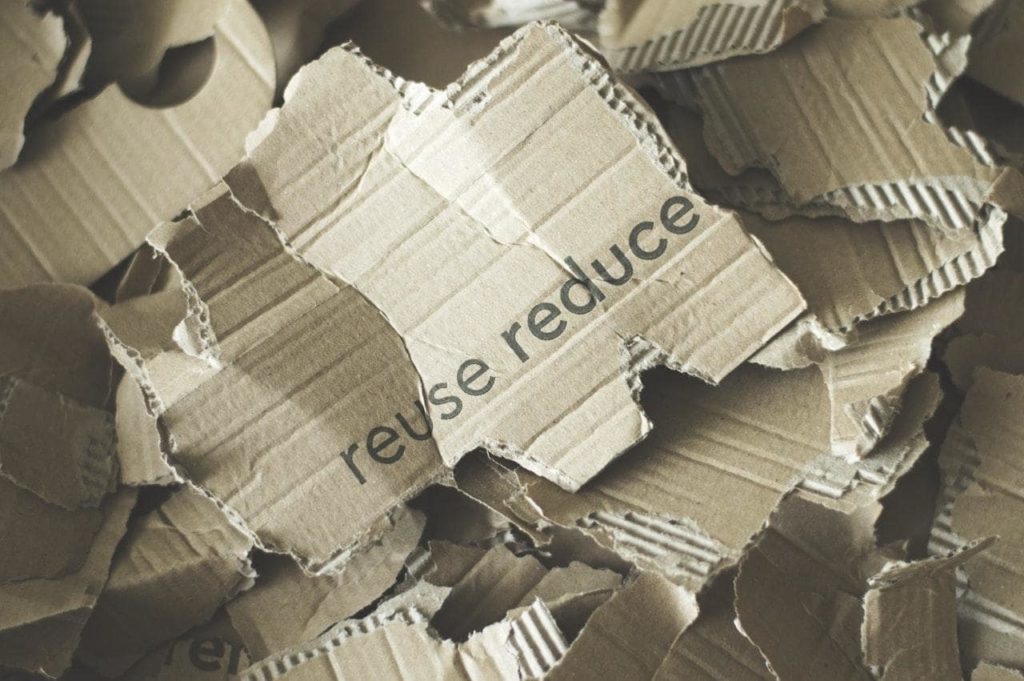
2. Clean Green
Many people focus their eco efforts on reducing waste and recycling, which is great for the environment. However, cleaning products are often overlooked, and they can be just as damaging to the local ecosystem and your wallet. Expensive cleaners, sprays, and creams often have many harmful chemicals in them. Oftentimes, these products are unnecessary and can cause eye and throat irritation, health problems, and even cancer. Switching away from these toxic cleaners is a great way of going green, and there are many affordable alternatives.
Warm water, soap, white vinegar, lemon juice, and baking soda will all help with the cleaning process. You'll likely have most of these in your cupboards already, so it's worth introducing them into your cleaning routine. Alternatively, look for eco-friendly alternatives to your usual brands.
3. Pick Less Packaging
Supermarkets are doing more to reduce plastic packaging, but they have a long way to go. You can help the process along by choosing items that have less plastic and recycling that which you do purchase. There are ways that you can reduce the amount of plastic you buy. For example, buying in bulk will often save on the total amount of packaging as well as keep your overall costs down. Additionally, you can opt for plastic that you know is recyclable in your area.
Many smaller stores will allow you to pick your own produce and use your own containers, so where possible try and do this.
4. Watch Your Water
People can often be wasteful with water without even realizing. After all, it's something that we take for granted. However, from washing to boiling water, we can all take steps to be more environmentally aware. When you're washing, the dishwasher can often be a more efficient way of cleaning your dishes. However, you should only run it when it's full. Additionally, forgo rinsing dishes before you load and use a light wash rather than a heavy one.
Kettles are one of the most used appliances in the kitchen, but boiling water takes a lot of energy. You can be more eco-friendly by only boiling what you need and not re-boiling the water.
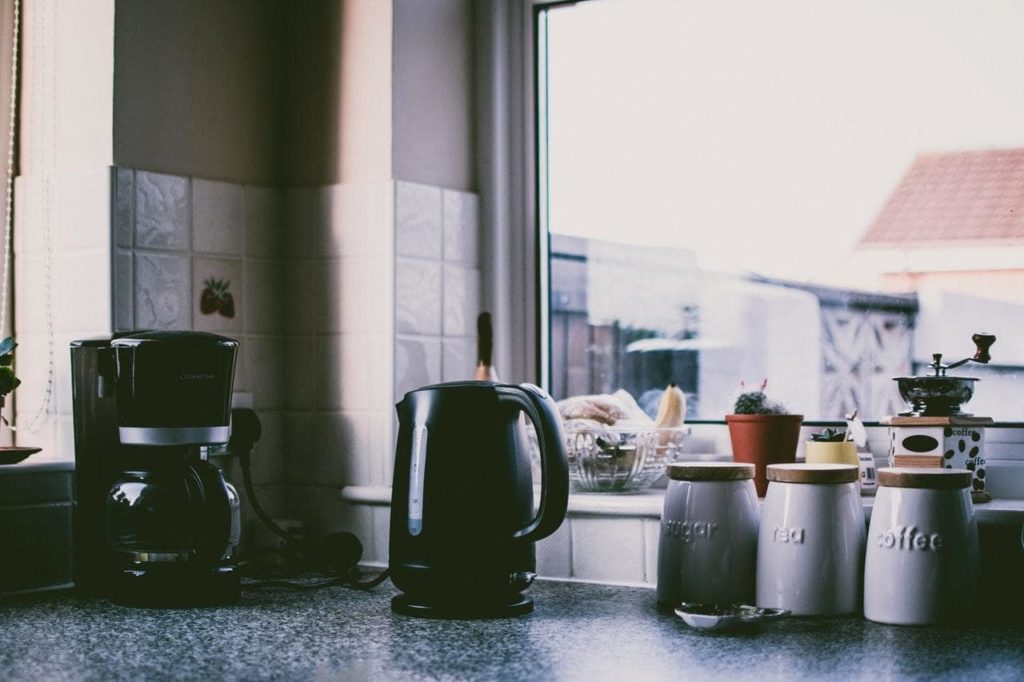
5. Shop Smart
Going to the local store every day can be an inefficient way of running your kitchen. It can create more waste overall and may well mean you have to take several trips in the car. By planning your meals and shopping in advance, you can ensure that you only get what you need and that you reduce your waste and carbon emissions. There are many apps to help you with your grocery list, but a good old fashioned pen and paper will suffice.
If you do find yourself with leftovers, try and not let it go to waste. At the very least you should consider composting food waste.
Why Reusable Instead Of Disposable?
One of the biggest steps you can make towards being more environmentally friendly is to use reusable and recycled bags and containers rather than disposable ones. Plastic bags are undoubtedly bad for the environment; every second 160,000 of them are used around the world, for an average of just 12 minutes. They're bad for marine life, take a lot of energy to produce, and don't biodegrade.
If you want to be more responsible about your approach to shopping and your kitchen, reusable containers and bags are an important first step. We've outlined some of the top reasons for using reusable instead of disposable items:
1. They're more affordable
It's common for stores in the US and Canada to now charge for plastic bags. Although this fee isn't much, when you total it up over the length of a year, your costs can be surprisingly high. Most stores charge a few cents per bag, but this can add up to a few dozen dollars per year, every year. A reusable bag can cost under a dollar and be used every time you shop.
2. They use fewer resources
Most plastic bags are made from oil in a process that emits greenhouse gasses. Switching to a reusable bag means that the effects of these are lessened, as you won't have to buy new plastic ones every time you shop. One alternative to plastic is paper bags, but again these use resources and processes that can harm the environment. Reusable is always a better choice.

3. They often use recycled materials
Many reusable bags are made from recycled materials, such as plastic bottles and other materials. This helps to reduce the amount of waste going into landfill. It's an eco-friendly approach that fuels itself; when the reusable bags eventually do wear out, they can once again be recycled and made into something useful.
4. They can be healthier
Glass, as opposed to plastic food storage, can be better for your health. Chemicals in plastic can leach into your food, especially when you're heating it during microwaving. Glass doesn't have such a problem, as it's a non-porous material. Containers made from glass are safe for using over and over. It's also better for the environment and can be recycled in a more cost-efficient manner.
5. They have many uses
Both glass containers and reusable bags have multiple uses, compared to their one-use disposable alternatives. Glass jars can be used for storage as well as cooking and serving. You can keep food in the freezer, thaw it and cook it in the oven, and serve it on the table without changing containers. Similarly, reusable bags don't have to just be for your grocery shop. You can take them with you whenever you need to carry or transport something. They often tend to be more robust that disposable plastic bags too.
Types of Reusable Bags
You have plenty of options available when it comes to reusable bags. Some stores offer their own, while plenty of specialist companies also produce them. Some are better for the environment than others. To help you choose the one that's right for you, we've listed a few examples:
Cotton and Canvas
These are often made with natural fibers and quite often contain recycled materials. You should check whether it uses organic cotton or not; organic means that no pesticides are used which helps to reduce the environmental harm of cotton production. They're often biodegradable, strong and durable, and can be washed. However, cotton production can be bad for the environment. Additionally, they're not naturally sterile or moisture resistant.
Hemp
Hemp is stronger than cotton and grows without the intense need for pesticides and fertilizers. It blends well with other materials to make strong, reusable bags that can be washed. However, much of the hemp industry relies on imported produce and it can be expensive.
Paper
Paper is biodegradable and can be made from recycled and renewable resources. However, they're not very strong which means that they can't be reused and they split fairly often. They're also relatively fairly heavy, making transport costs relatively high.
Plastic
There are a few different options available when it comes to plastic. Recycled PET bags are made from recycled PET bottles and are common in supermarkets. It's strong and durable but is often made offshore and imported.
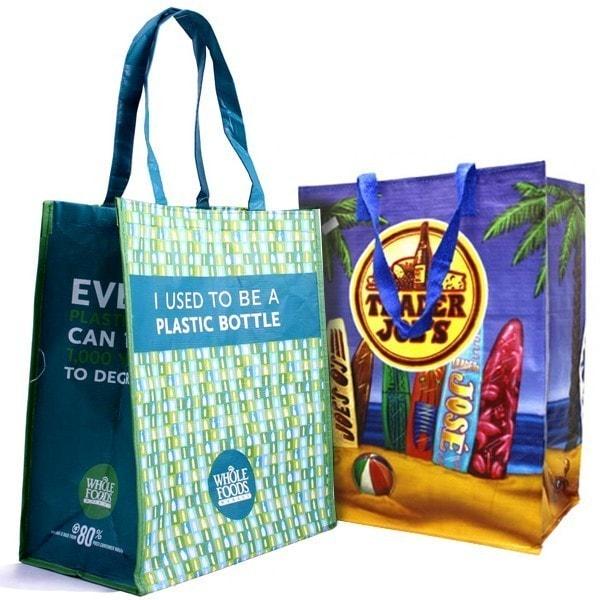
Polypropylene reusable bags are made from a spun and non-woven polypropylene. It's incredibly strong and durable and can be easily cleaned. However, it's not recyclable everywhere and isn't biodegradable.
Polyethylene ‘bags-for-life' are made from heavy duty plastic and are highly recyclable. They can be frequently reused, but aren't biodegradable.
How Many Times Should You Reuse Your Reusable Bags?
So, reusable bags come with many benefits to you and the environment. But how many times do you have to use them in order for them to be more eco-friendly than single-use plastic bags? The answer depends a little on the type and material of bag you use, and who you ask.
One Danish Study looked at factors such as associated emissions, waste created, and water, and energy usage, and suggests that:
- The most common polypropylene bags found at supermarkets should be used 37 times.
- Most paper bags need to be used 43 times.
- Bags made from cotton should be used 7,100 times.
A British Study looking at the impacts to climate change found that:
- Paper bags must be used three times.
- Thicker low-density polyethylene bags that supermarkets use should be reused four times.
- Polypropylene bags have to be used 11 times.
- Most cotton bags need to be used 131 times.
How to Cut Down On Plastic Bags?
If everyone used a little less plastic in their everyday lives, it could make a huge difference to the environment. Around 8.3 billion tons of plastic has been produced, of which about 79% is now in landfill or the environment. Here are some quick-fire tips to help you reduce the amount of plastic bags you use:
- Choose a reusable shopping bag and take it with you every time you shop.
- Say ‘no' when offered a single-use plastic bag in a store or restaurant.
- Buy groceries that are free from plastic wrap and bag.
- If you do have plastic bags at home, reuse them before recycling them.
- Buy produce from local markets and sources, and take your reusable bags with you.
- Look for brands that use reusable and eco-friendly packaging rather than plastic bags.
- Use reusable containers or cloth bags for your lunch, rather than disposable bags.
- Compost your food waste rather than putting it in plastic garbage bags.
- Request zero plastic packaging when shopping, online or otherwise.
- If you have to use plastic bags, choose ones that can be reused and recycled.
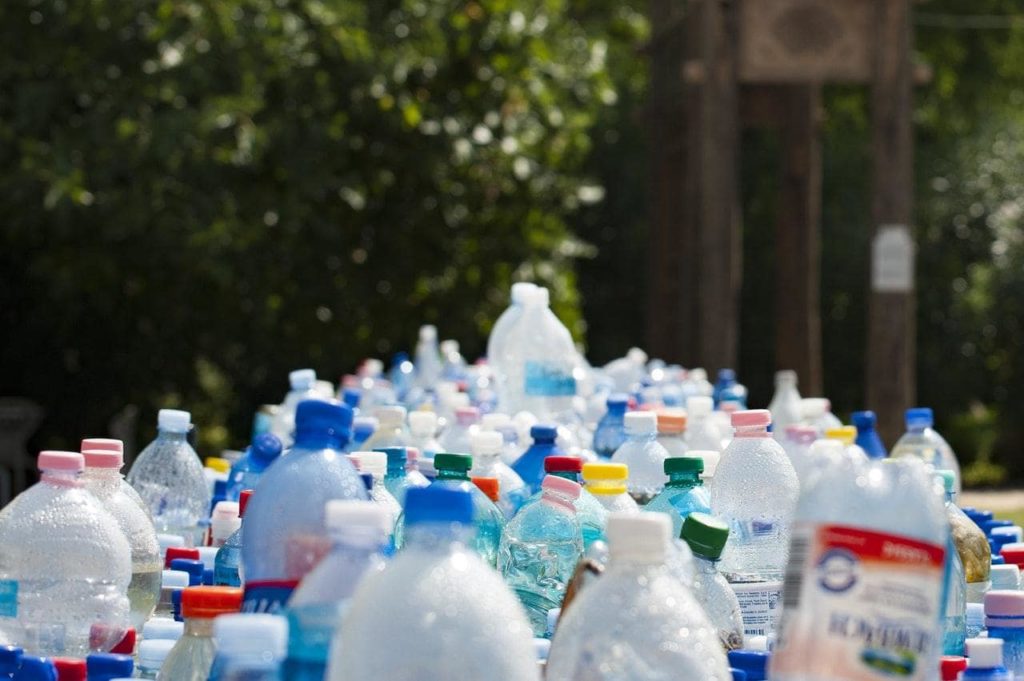
Removing the Toxins from Your Kitchen: A Step By Step Process
In an earlier section, we mentioned how by ‘cleaning green' you can make a huge difference. It's worth taking a closer look at this, as toxins are prevalent in places you may not even know. These pollutants can be bad for our health and the environment, so it's important to identify them and take steps to avoid them. Some of the most common toxins in the kitchen include:
- Cans. Although canned food is convenient and ubiquitous, they hold a secret. A plastic known as BPA coats the inside of the can. There have been a number of studies that show a whole range of undesirable effects of BPA, including infertility, depression, cancer, and diabetes. You can avoid BPA by cooking fresh rather than canned food.
- Aluminum foil. Studies have linked aluminum to a range of degenerative brain diseases. You should limit its use where possible, as the chemical can also be found in other kitchen essentials.
- Household cleaners. Store-bought cleaners are some of the most toxic substances in the home. They're bad your respiratory health as well as the environment. You should always opt for environmentally safe alternatives or make your own supply.
- Plastic storage. Reusable containers are important for sustainability. However, as discussed already, you should opt for glass above plastic. The latter tends to leach chemicals into food when heated.
- Non-stick pans. Although Teflon can stop food sticking, it produces chemicals when heated to high temperatures. It can contribute to high cholesterol, obesity, and poor immunity. Switch to stainless steel or cast-iron alternatives.

Now that you know about some of the main offenders in the kitchen, here are our top tips on how to reduce your reliance on them:
- Cook fresh. Reduce your dependence on processed and canned goods. Opt for fresh, organic produce wherever you can.
- Clean green. See our ‘clean green' section above for more info. Switch to natural products such as vinegar, baking soda, lemon juice, and soap to clean.
- Choose non-toxic. Ditch the Teflon and plastic containers. Instead, go for safe materials such as glass, stainless steel, and cast-iron.
Gain access to Orders, Tracking, Custom Options and Much More!